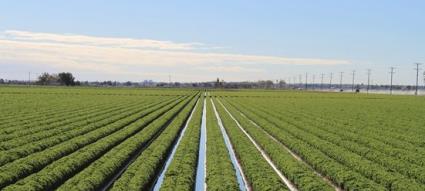 Dr. Timothy D. Lytton a Distinguished University Professor of law at Georgia State University recently published an opinion on aspects of FDA oversight of leafy green production. There is a long history of outbreaks of Shiga toxin producing E.coli (STEC) attributed to leafy greens with successive Federal administrations attempting to devise regulations and performance standards focusing on testing procedures rather than practical preventive modalities.
Dr. Timothy D. Lytton a Distinguished University Professor of law at Georgia State University recently published an opinion on aspects of FDA oversight of leafy green production. There is a long history of outbreaks of Shiga toxin producing E.coli (STEC) attributed to leafy greens with successive Federal administrations attempting to devise regulations and performance standards focusing on testing procedures rather than practical preventive modalities.
The Leafy Greens Marketing Agreement was initiated in 2006 following outbreaks of food-borne infection associated with spinach. Various incidents occurred in subsequent years with the most recent extensive series of cases in 2017 and 2018, traced back to romaine lettuce cultivated in the costal region of California and the Yuma Valley of Arizona. We are now in an era of whole-genome sequencing and FoodNet and other databases. Multistate outbreaks of food-borne infection can be rapidly recognized and traced back to source given intensity of diagnostic and epidemiologic procedures.
It does not take much imagination and perspective to recognize that the source of STEC contamination is the intestinal tract of ruminants housed on concentrated animal feeding operations (CAFOs). Run-off results in contamination of both surface and ground water used to irrigate fields of leafy greens. Growers of lettuce and spinach have been attempting to separate their operations from CAFOs under the guidance of both academia and government agencies but their efforts may be too little and too late.
 There is no guarantee that measures adopted in 2019 and extending into 2020 will eliminate the inherent problem of contamination. Growers will have to recognize that proximity to a CAFO is incompatible with food safety given that they are cultivating and distributing a product that is consumed raw. In the absence of a practical method of decontaminating green produce there can be no assurance that measures adopted to date will prevent subsequent seasonal outbreaks among U.S. consumers. Monitoring a small proportion of produce using insensitive protocols does not eliminate pathogens. Identifying produce by farm or even field only facilities trace-back after the effect. These palliative measures create the illusion of control.
There is no guarantee that measures adopted in 2019 and extending into 2020 will eliminate the inherent problem of contamination. Growers will have to recognize that proximity to a CAFO is incompatible with food safety given that they are cultivating and distributing a product that is consumed raw. In the absence of a practical method of decontaminating green produce there can be no assurance that measures adopted to date will prevent subsequent seasonal outbreaks among U.S. consumers. Monitoring a small proportion of produce using insensitive protocols does not eliminate pathogens. Identifying produce by farm or even field only facilities trace-back after the effect. These palliative measures create the illusion of control.
If the farmers cultivating leafy greens cannot devise a simple and effective method of decontaminating their product at a packing plant using advanced technology such as electron beam treatment then they will be obliged to segregate their fields and irrigation systems from potential contamination by CAFOs.
For too long the FDA has ignored reality and issued vague suggestions for incremental improvement. The Agency has issued well-meaning but unconvincing statements pledging to "prioritize work with leafy greens stakeholders to develop better water standards and testing protocols."
Dr. Lytton notes that progress is slow and unlikely to yield quick answers. Either realistic measures will be adopted, or consumers will continue to be subject to reoccurring outbreaks of STEC infection.